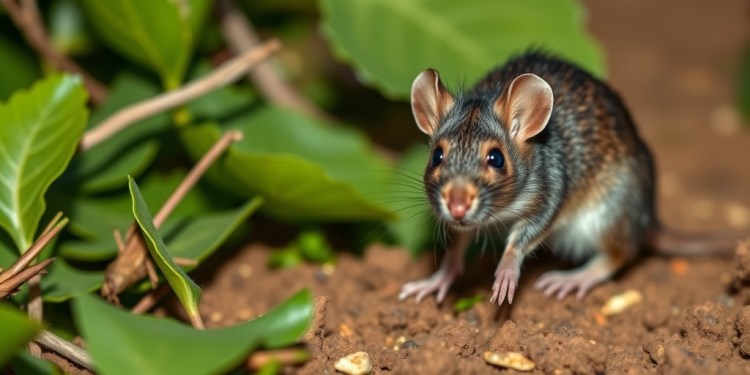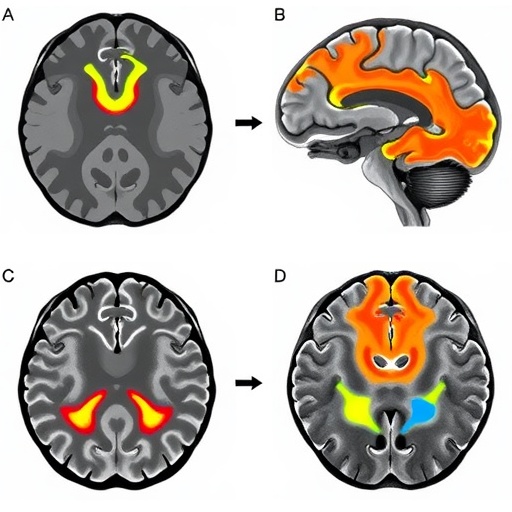
Invasive species, often regarded as environmental disruptors, command significant attention for their role in affecting ecosystems in profound, often unforeseen ways. Yet, the implications of their presence extend beyond ecological damage—these non-native species can have concrete impacts on human health as well. The recent COVID-19 pandemic underscores this reality, exemplifying how diseases can leap from animals to humans and wreak havoc on global public health. A salient example highlighted in recent research is the connection between the black rat and hantavirus transmission in rural Madagascar, elucidated in a collaborative study by researchers from UC Santa Barbara, the University of Réunion, and Duke University.
The study, published in the journal Ecology and Evolution, reveals alarming insights into the role of the black rat, known scientifically as Rattus rattus, in the potential transmission of hantaviruses in Madagascar. This rodent species is notorious for its capacity to coexist in close quarters with human populations, often infiltrating agricultural areas and dwellings in search of food. Originating in southern Asia, black rats migrated alongside human trade routes, arriving in Madagascar between the 10th and 14th centuries, where they have since thrived in agricultural landscapes created by deforestation and land conversion.
Fascination among disease ecologists has surged regarding which local species might serve as hosts for hantaviruses in Madagascar, particularly as human activity alters land use patterns. Hantaviruses are a group of pathogens that manifest a range of potentially lethal diseases in humans, primarily transmitted via contact with rodent excreta. The need to identify and control these disease vectors has never been more urgent, especially given the implications for rural communities directly engaged in agriculture or living near forest edges.
As part of their research, the authors established collaborative efforts with local communities adjacent to Marojejy National Park in northeastern Madagascar. Engaging with residents, the research team was granted access to capture small mammals and bats in both agricultural settings and more natural forested areas. This cooperation allowed for a comprehensive examination of varying landscapes and their respective roles in disease transmission dynamics.
The research team analyzed nearly 2,000 small mammals and bats, sending collected specimens to their laboratory in La Réunion for comprehensive testing for hantavirus presence. Each positive sample underwent genome sequencing to elucidate the relationship of the identified viruses within Madagascar and to established strains worldwide. Understanding the genetic makeup of these viruses is paramount, as it can offer insights into their origins and evolution, paving the way for future public health interventions.
The findings from this rigorous study were striking. Among the 17 small mammal species and 11 bat species examined, hantavirus was only detected in black rats. This outcome was unexpected, particularly in light of previous global studies where other non-native rodent species have demonstrated susceptibility to hantavirus infection. The implications of this finding may indicate a unique ecological or evolutionary relationship between black rats and the hantaviruses they carry.
Further analysis revealed a correlation between the infection rate of rats and various demographic factors, notably age and habitat. Larger adult rats, commonly found in agricultural regions, exhibited a higher likelihood of being infected compared to their counterparts trapped in human habitats. This suggests that human agricultural practices may inadvertently increase exposure risk among local populations, as interactions with infected rats become more probable in fields than in domestic settings.
Intriguingly, despite the higher prevalence of hantaviruses in rats dwelling within agroforestry landscapes, no infected rats were captured in the adjacent rainforest areas. This observation aligns with the hypothesis that human-induced landscape alterations can significantly impact the ecology of disease transmission. The absence of infection in rainforest rats underscores the critical need to understand how habitat fragmentation influences zoonotic disease dynamics.
This expansive research project, funded by the National Institutes of Health and Duke University, has harnessed the expertise of a diverse, international team spanning various academic disciplines, including epidemiology and veterinary health. Over eight years, the team has systematically investigated zoonotic pathogens across differing biomes, examining how variations in ecological context shape pathogen prevalence and human exposure risk in both wildlife and domestic populations.
The authors of this noteworthy study are on a quest to establish the timeline for hantavirus introduction to Madagascar, using their samples in conjunction with historical data. Continuing investigations aim to delve deeper into the intersections between habitat disruption, human land use, and the transmission dynamics of zoonotic parasites, with the intent of mitigating the risk factors associated with these emerging infectious diseases.
The work conducted in Madagascar serves as a potent reminder of how intertwined human health is with the delicate balance of ecosystems. As we continue to encroach upon natural habitats, understanding the risks posed by invasive species such as the black rat becomes increasingly vital. Through continued research and collaboration, we may better equip ourselves to confront the challenges posed by zoonotic diseases in a rapidly changing world.
In conclusion, the study of rats in Madagascar not only provides insights into hantavirus transmission but also highlights the broader implications of biodiversity loss, habitat fragmentation, and human encroachment. As research progresses, the understanding of these complex interactions will be crucial for designing effective public health strategies and environmental conservation efforts directed at curtailing the spread of infectious diseases.
Subject of Research: Black rats and hantavirus transmission in Madagascar
Article Title: Black Rats as Vectors of Hantavirus in Madagascar: An Ecological Perspective
News Publication Date: October 2023
Web References: https://doi.org/10.1002/ece3.70914
References: Not applicable
Image Credits: Not applicable
Keywords: Hantavirus, Black Rat, Zoonotic Diseases, Madagascar, Invasive Species, Disease Ecology, Land Use Change, Public Health, Ecology, Epidemiology, Animal Hosts, Disease Transmission.
Tags: agricultural ecosystem vulnerabilitiesagricultural health risksblack rat populations Madagascardisease ecology research Madagascarecological disruption invasive speciesenvironmental health challengesHantavirus transmissionhuman-animal disease interactionsinvasive species impactpublic health implications rodentsRattus rattus behaviorzoonotic diseases transmission





